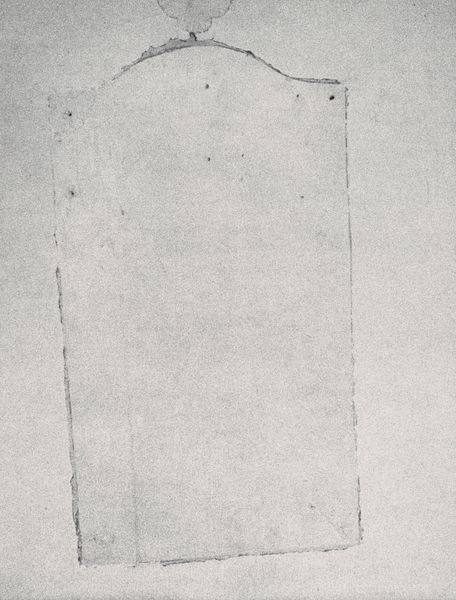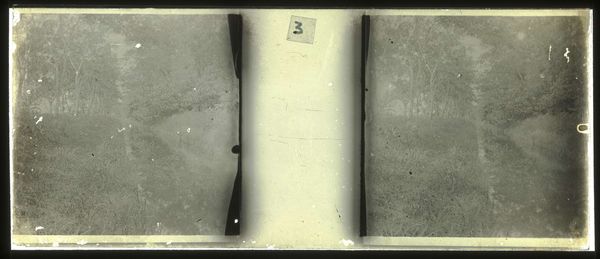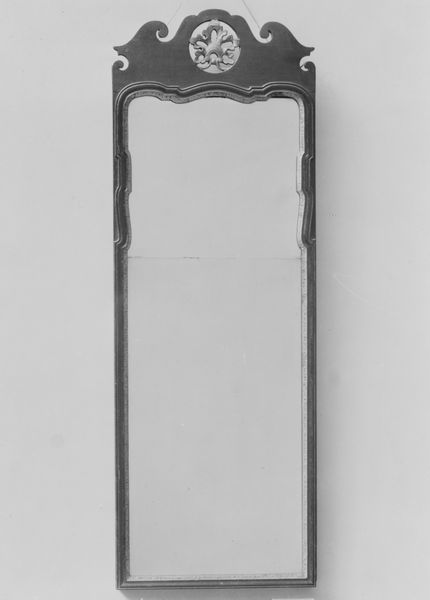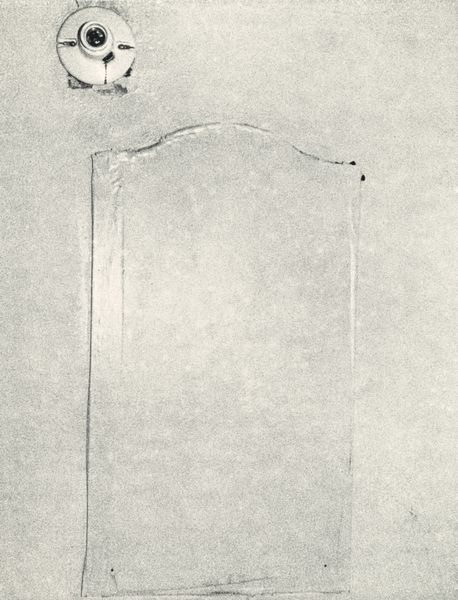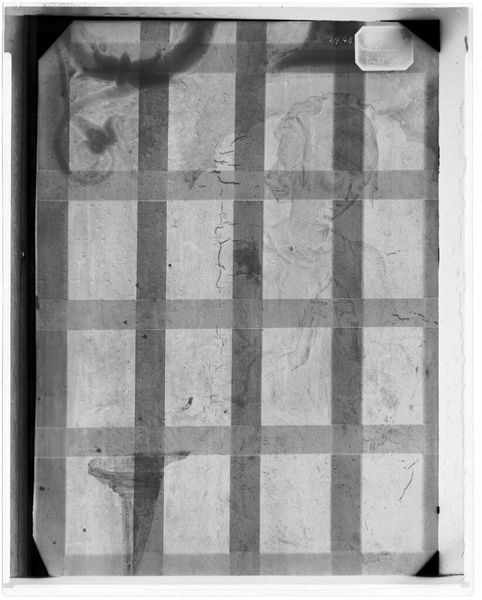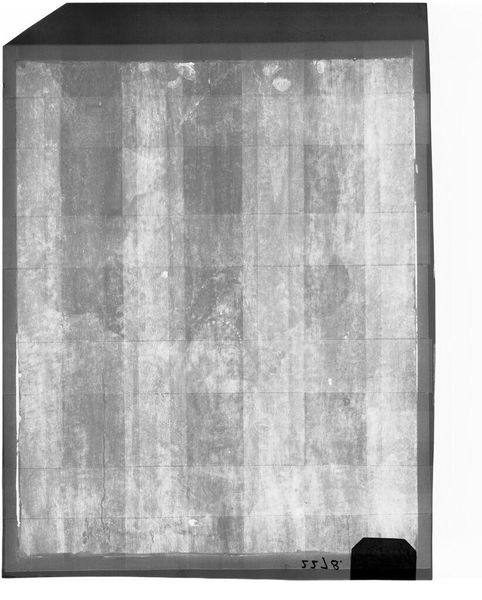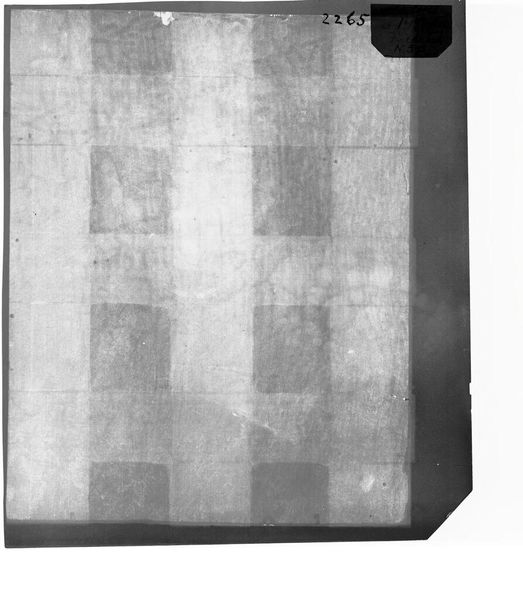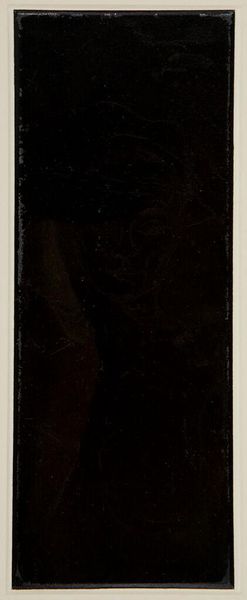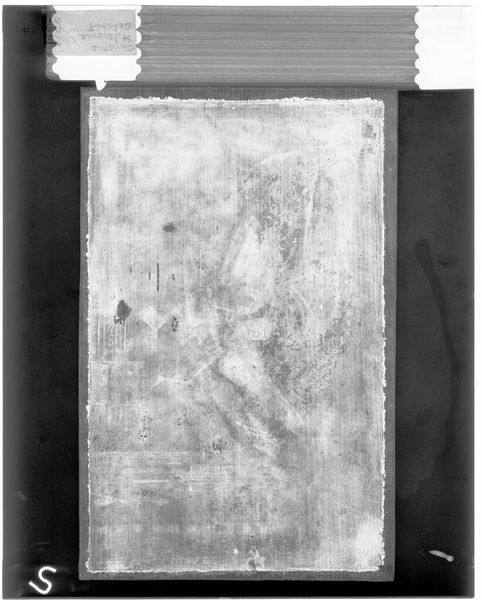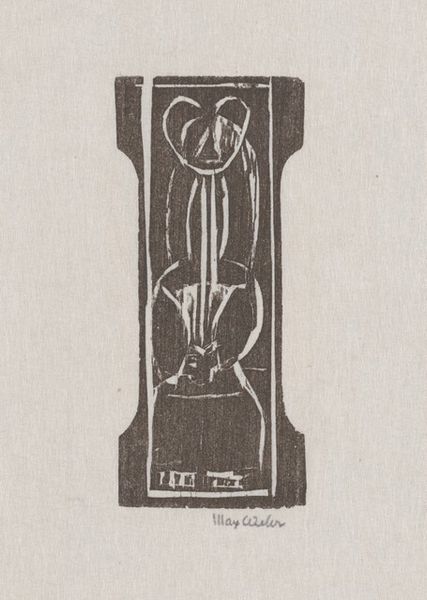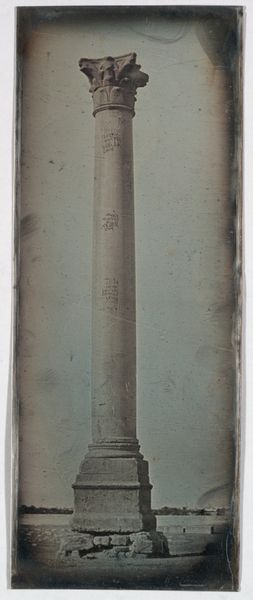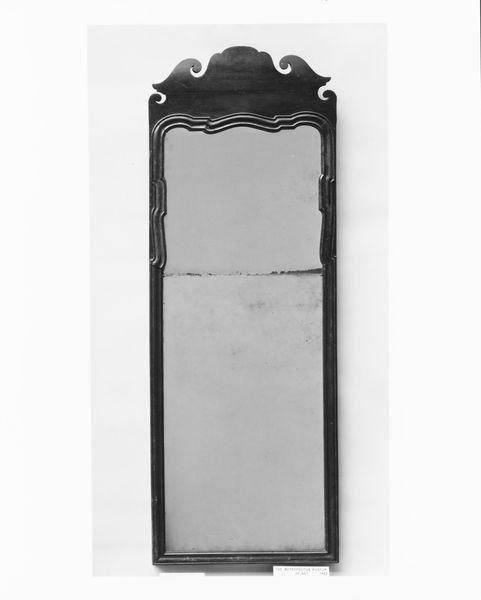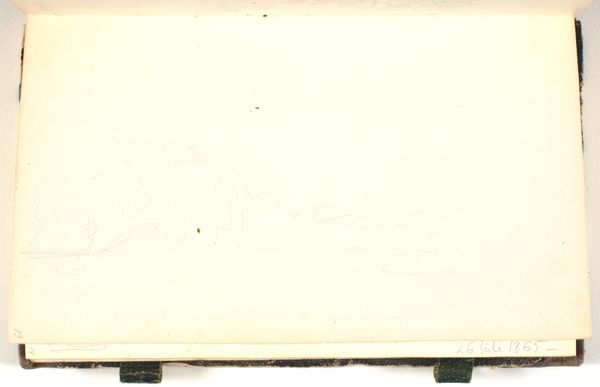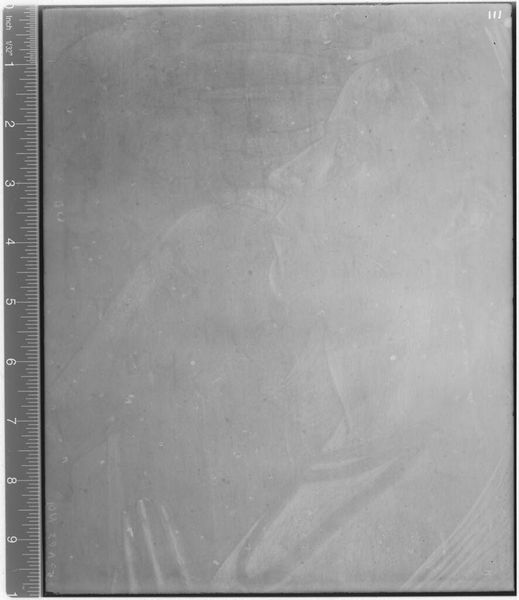
photography
#
conceptual-art
#
sculpture
#
photography
Dimensions: image: 31.7 × 24.4 cm (12 1/2 × 9 5/8 in.) sheet: 35.3 × 27.8 cm (13 7/8 × 10 15/16 in.)
Copyright: National Gallery of Art: CC0 1.0
Curator: Today, we're examining "The Hollywood Suites (Mirrors) #1" by Steve Kahn, taken in 1976. It's a photograph. Editor: Stark, isn't it? My first impression is one of utilitarian neglect—the kind you see in spaces meant to reflect glamour, yet steeped in visible wear. It evokes a feeling of discarded aspiration. Curator: That's fascinating, particularly because of the photographic medium employed here. The focus on the material reality—the scratched surface, the bolted corners—rather than any reflected image underscores Kahn’s interest in the physicality of representation itself. The mirror's function is denied. Editor: Absolutely, and considering it was shot in 1976, within what was arguably the waning years of Hollywood's Golden Age, this resonates even deeper. We’re seeing a subversion, a deconstruction of the Hollywood mythos. The scribbles etched on its surface—perhaps vandalization or just the accumulation of anonymous traces—suggests a public disaffection with the industry's projected image. Curator: One could even apply semiotics here. The mirror, as a signifier of vanity and self-reflection, is rendered useless and abject. The signs of wear and the simple composition work together to challenge those inherent assumptions. The conceptual project then, is the photograph itself as the primary sign. Editor: Exactly! This mirror stands as a metaphor for the distorted representations of women, the underrepresentation of minorities, and the socio-political apathy in mainstream cinema— a poignant critique. The monochrome amplifies the gravity and exposes artifice within these constructed realities. Curator: I appreciate the dialogue here between the art object and larger socio-cultural contexts. I believe it deepens our appreciation and broadens interpretations in engaging with a photograph whose very intention resides in disrupting conventional visual engagement. Editor: Yes, engaging with this piece reveals how conceptual art intersects with potent cultural critiques, making the experience unexpectedly visceral.
Comments
No comments
Be the first to comment and join the conversation on the ultimate creative platform.
